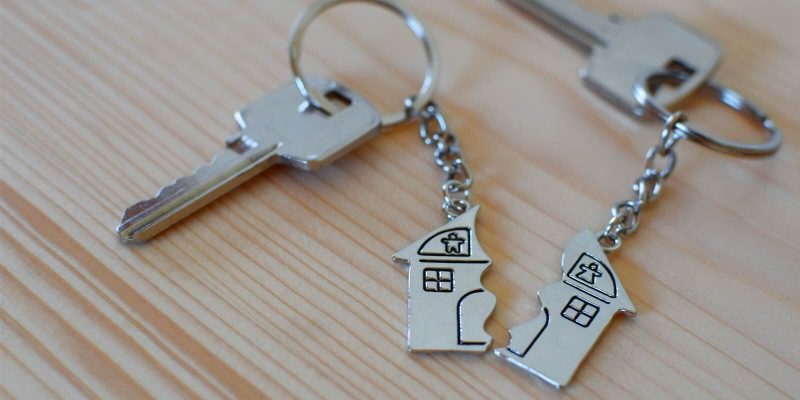 Learn how to read a floor plan. A floor plan is essential to the construction of a new property, although it can appear daunting at a glance due to the many symbols it contains. However, it is designed to present a clear layout of a home’s floor. An “open” floor plan refers to a home in which two or more traditional-use areas were joined to create a significantly larger space by removing some partition walls. According to some surveys conducted by the National Association of Home Builders, 32% of buyers say they desire a property with an entirely open kitchen-family room arrangement, while 45% wished for a fully open kitchen-dining area. In total, 54% of builders said their single-family home was constructed that way.
Learn how to read a floor plan. A floor plan is essential to the construction of a new property, although it can appear daunting at a glance due to the many symbols it contains. However, it is designed to present a clear layout of a home’s floor. An “open” floor plan refers to a home in which two or more traditional-use areas were joined to create a significantly larger space by removing some partition walls. According to some surveys conducted by the National Association of Home Builders, 32% of buyers say they desire a property with an entirely open kitchen-family room arrangement, while 45% wished for a fully open kitchen-dining area. In total, 54% of builders said their single-family home was constructed that way.
Important Factors When Reading a Floor Plan
The professionals at the Katie Zarpas Group can assist you with understanding this type of document if you’re looking to buy a new home. Here is a guide on how to read a floor plan, formerly called a “blueprint.”
How to Read Symbols
The walls of a home constitute one of the most important visual aspects of a floor plan. They are typically designated by parallel lines and can occasionally contain a pattern. A break in a wall signifies the presence of a window, door, or an opening between rooms. Sliding doors are often drawn partly open alongside a wall.
A set of rectangles typically indicate stairs and an arrow showing which direction they go relative to the floor in question is also included. Essential fixtures and appliances like sinks and refrigerators are often drawn almost exactly as they look.
Gauge Dimensions & Imagine Space
 “Dimension strings” are often utilized to identify doors, windows, and walls. They are usually drawn parallel to an architectural structure with 45° marks at each end to show where every measurement begins and ends.
“Dimension strings” are often utilized to identify doors, windows, and walls. They are usually drawn parallel to an architectural structure with 45° marks at each end to show where every measurement begins and ends.
In order to help you imagine how space on a floor can be used, an architect can include furniture like chairs, tables, and couches. Ceiling height and the placement of windows (i.e. how natural light streams into a room) can also give you an idea of how much room you can work with.
What Floor Plans Can’t Tell You
Nearly all floor plans include a scale that shows how much of a given space can fit on a piece of paper. According to diagramming software Edraw, ¼ inch-1 foot is a scale ratio frequently used today.
Nevertheless, there are certain things a floor plan normally doesn’t show, such as plumbing and electrical circuits. It also rarely displays how elevated a property’s floors are, so it may not show you how high up a deck is, for example. Therefore, it’s important to obtain as much information as possible about all of this.
Finding the Right Floor Plan for You
Ultimately, a floor plan should reflect your priorities as a homeowner. One NAHB preference survey revealed 29% of homebuyers (a majority) desire a home with 2,500 square feet or more. Aside from size and design style, however, you should also keep your budget in mind and factor in expenses such as heating and cooling and other general maintenance costs.
 Be sure to have a clear idea of how much outdoor space you are interested in (e.g., do you want a porch or a patio?). You should also decide whether you wish to have fixtures like ceiling fans installed, and how much space on each room’s walls you hope to use for paintings and other decorations.
Be sure to have a clear idea of how much outdoor space you are interested in (e.g., do you want a porch or a patio?). You should also decide whether you wish to have fixtures like ceiling fans installed, and how much space on each room’s walls you hope to use for paintings and other decorations.
Speak with a Seasoned Virginia Beach Real Estate Agent
Reach out to the luxury real estate professionals at the Katie Zarpas Group in Virginia Beach to learn more about the importance of a floor plan in the homebuying process.
Katie Zarpas worked as an assistant director in the entertainment industry for years before entering the luxury real estate business in 2005. She acquired many valuable connections during her former profession. The Hampton Roads Realtors Association gave Katie the Rookie of the Year Award after she sold 28 homes throughout her first year. She has also received the HRRA’s Diamond, Gold, and Platinum awards.
The Katie Zarpas Group handles listings in Virginia Beach and the surrounding areas, including Chesapeake, Portsmouth, Norfolk, and Suffolk. We constantly monitor local real estate market trends, and can thus help you estimate the value of your home with as much accuracy as possible. Call the Katie Zarpas Group today at (757) 685-4400 or contact us online for more information about our work. You’ll hardly find a more reliable real estate organization in Virginia.



 Until your divorce is final, you want to be sure your new home will be considered your separate property. Any money you use when buying a house during a divorce, including the down payment, must be financed with your own money. That means you cannot use “marital property” to finance or pay for expense associated with the purchase.
Until your divorce is final, you want to be sure your new home will be considered your separate property. Any money you use when buying a house during a divorce, including the down payment, must be financed with your own money. That means you cannot use “marital property” to finance or pay for expense associated with the purchase. In some cases, getting a legal separation before proceeding with a divorce makes sense. If you practicable in your case, having a legal separation along with a property settlement agreement signed by your spouse will protect your new house from being considered marital property. Your property settlement agreement should specifically address newly acquired property and separate assets. Notwithstanding the settlement agreement, you still need to avoid using marital money to pay for any aspect of your new home.
In some cases, getting a legal separation before proceeding with a divorce makes sense. If you practicable in your case, having a legal separation along with a property settlement agreement signed by your spouse will protect your new house from being considered marital property. Your property settlement agreement should specifically address newly acquired property and separate assets. Notwithstanding the settlement agreement, you still need to avoid using marital money to pay for any aspect of your new home. As alluded to earlier, your own unique circumstances could affect your post-divorce financial picture. For example, if you are at fault in ending the marriage, the court may order you to pay more support or have your support reduced. Even though spousal support is a payment from one spouse to the other to help the recipient spouse maintain a lifestyle as close as possible to the one they had during the marriage, the court will factor into the final order any bad behavior that led to the divorce.
As alluded to earlier, your own unique circumstances could affect your post-divorce financial picture. For example, if you are at fault in ending the marriage, the court may order you to pay more support or have your support reduced. Even though spousal support is a payment from one spouse to the other to help the recipient spouse maintain a lifestyle as close as possible to the one they had during the marriage, the court will factor into the final order any bad behavior that led to the divorce.
 The Foundation for Community Association Research recently reported that approximately 22-24% of the United States population resides in
The Foundation for Community Association Research recently reported that approximately 22-24% of the United States population resides in  Virginia, for example, has its own Fair Housing Law, which has discrimination protections
Virginia, for example, has its own Fair Housing Law, which has discrimination protections  In many cases, HOA members are decided via elections among community residents. However, it’s important for you to remain involved in your neighborhood, even if you do not officially sit on the board of directors. You should regularly speak out about any concerns you may have, especially if you fear your community is likely to be hit by a natural disaster such as a flood or an earthquake. You could suggest purchasing catastrophe insurance for situations such as these. Certain HOAs may offer additional coverage as a perk for ownership, in addition to snow removal, for example.
In many cases, HOA members are decided via elections among community residents. However, it’s important for you to remain involved in your neighborhood, even if you do not officially sit on the board of directors. You should regularly speak out about any concerns you may have, especially if you fear your community is likely to be hit by a natural disaster such as a flood or an earthquake. You could suggest purchasing catastrophe insurance for situations such as these. Certain HOAs may offer additional coverage as a perk for ownership, in addition to snow removal, for example.
 Look at many different properties and communities before settling on one. You might like a particular beach, but you need to investigate the area surrounding it and different communities. That means learning about the community and nearby plans for development. You may not like the fact that a
Look at many different properties and communities before settling on one. You might like a particular beach, but you need to investigate the area surrounding it and different communities. That means learning about the community and nearby plans for development. You may not like the fact that a  Shop around for homeowner’s insurance. Is insurance even available for a home in your chosen beach location? If it is available, make sure your budget will cover the premiums you’ll face to insure it. If you are getting a mortgage to buy the house, the lender will likely require you to have special insurance for flood, wind, or hail damage. Don’t forget to factor in premium increases, too.
Shop around for homeowner’s insurance. Is insurance even available for a home in your chosen beach location? If it is available, make sure your budget will cover the premiums you’ll face to insure it. If you are getting a mortgage to buy the house, the lender will likely require you to have special insurance for flood, wind, or hail damage. Don’t forget to factor in premium increases, too. A popular way to recoup some of the costs of a beach real estate is renting it out to vacationers. If you plan to do that, keep some things in mind as you do your house hunting. The first is to make sure the community permits it and understand any restrictions placed on it by the HOA (if applicable) and local ordinances. You may need a home inspection and a license before you can rent it.
A popular way to recoup some of the costs of a beach real estate is renting it out to vacationers. If you plan to do that, keep some things in mind as you do your house hunting. The first is to make sure the community permits it and understand any restrictions placed on it by the HOA (if applicable) and local ordinances. You may need a home inspection and a license before you can rent it.
 Here are some of the advantages when renting a home:
Here are some of the advantages when renting a home: Some of the advantages when buying a home include:
Some of the advantages when buying a home include:
 One of the biggest considerations in the sale of a vacation home is handling the tax obligation you will have on any gain you realize on the sale. Before you list the home for sale, make sure you understand the type of property you own and the potential capital gains taxes you will owe upon a sale. Once you have this information, you can plan more clearly about listing it, how to market it, and the timing of all of it.
One of the biggest considerations in the sale of a vacation home is handling the tax obligation you will have on any gain you realize on the sale. Before you list the home for sale, make sure you understand the type of property you own and the potential capital gains taxes you will owe upon a sale. Once you have this information, you can plan more clearly about listing it, how to market it, and the timing of all of it. Now that you know what your tax picture looks like, you can figure out the best time to sell. You can maximize your sale price if you sell when the market is hot. For example, you will probably sell your beach property faster and at a better price if you list it during the peak of the beach season. If your property is not a seasonal property, consult your real estate agent about the best time to sell homes in the area. For example, in some locations, summer is the best time to sell because parents with children will not have to disrupt a child’s school year.
Now that you know what your tax picture looks like, you can figure out the best time to sell. You can maximize your sale price if you sell when the market is hot. For example, you will probably sell your beach property faster and at a better price if you list it during the peak of the beach season. If your property is not a seasonal property, consult your real estate agent about the best time to sell homes in the area. For example, in some locations, summer is the best time to sell because parents with children will not have to disrupt a child’s school year. Stage the home
Stage the home Find a real estate agent who specializes in vacation home sales and your particular market. Remember, the real estate agent’s job is to get the best possible price for your home. An agent who is experienced with vacation home sales in the local market is the best way to find a ready and able buyer for your home– fast. The agent should be able to set the price, advise you on what you need to do to get your home sold quickly and guide you through the entire process. It will make the selling experience as stress-free as possible.
Find a real estate agent who specializes in vacation home sales and your particular market. Remember, the real estate agent’s job is to get the best possible price for your home. An agent who is experienced with vacation home sales in the local market is the best way to find a ready and able buyer for your home– fast. The agent should be able to set the price, advise you on what you need to do to get your home sold quickly and guide you through the entire process. It will make the selling experience as stress-free as possible.